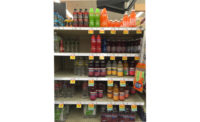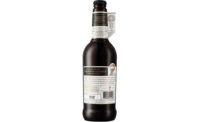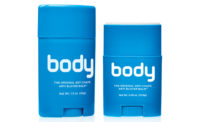Nut Packaging Gets New Design and Structure




The story: Colo.-based Ricky’s Lucky Nuts, a “nut company with a conscience,” makes all-natural, dry-roasted, premium peanuts with a unique crystalline spice coating in six sweet and spicy flavors. The brand went to market in 2009.
“Ricky’s Lucky Nuts really started accidentally,” says Carolyn Lamb, co-owner. “The original recipe came from Rick, a chef and colleague of founder Paul Gelose. Paul made these nuts for private parties at his restaurant in Durango, and they received such rave reviews that he decided to develop a commercial line. When the cooks in the kitchen asked what he called the recipe, he declared them to be ‘Ricky’s Lucky Nuts.’”
“Ricky’s exists to take the ordinary peanut and make it extraordinary,” she continues. “The peanut category has been remarkably stagnant for decades, and we aim to bring change to it through our flavors and process.”
The challenge: As the company grew, it found the original design at odds with its ripened positioning. The brand wanted to increase standout in its current retail channels as well as move into the convenience arena as an everyday snack.
“We loved our first look, but it felt more gourmet, more specialty,” says Lamb. “We looked great in holiday gift baskets and on shelves in high-end kitchen shops. In conventional retail, however, our subtle color palette got washed out and could not hold its own — and we have always known that conventional and natural grocery were our best bets for success.”
Ricky’s also desired to remove unnecessary facts and more closely connect the design to the brand’s story.
“Some of our claims and benefits seemed irrelevant now,” says Lamb. “Most people know a dry-roasted peanut is going to be free of trans fat. We don’t feel a need to waste valuable front-of-bag real estate on this claim. Our old logo featured a hand-drawn image of part of the globe. The intention was to show that we create flavored peanuts from all over the world, but there was a disconnect between the name Ricky’s Lucky Nuts and the globe.”
The solution: The brand worked with local advertising agency LRXD to create new packaging for its flavorful nuts.
“We wanted a design that would intrigue — make consumers take that extra few seconds to take it all in. There is a lot going on with our packaging: We wanted to combine bold colors with interesting design elements. That way, we would stay true to our roots of ‘being unique’ but better be able to compete against all the reds and blues in the snack aisle.”
Ricky’s Lucky Nuts started by emphasizing the brand name and adding a horseshoe to tie in the luck element. Then, it changed its package to include a foil barrier on the metalized poly grab-and-go bag. The pack’s film is 3ml thick to feel good in hand and hold its shape in point-of-purchase boxes.
“We decided to eliminate the window that we had on our old packaging,” says Lamb. “This was a bit of a risk, both because people love to see what they’re buying and also, to explain how unique we are, it is best for consumers to see the product. Unfortunately, sunlight was causing the spices on some of the flavors to fade. It didn’t affect flavor, but the rich colors were getting lost. For instance, we featured a yellow curry peanut that was a beautiful deep yellow, but after a few weeks on the shelves, the yellow would become ashen.”
In place of the actual product, the brand now features photography of its peanuts in a cluster, along with related illustrations, flexo-printed on the pack.
“The peanuts are enlarged to show detail,” says Lamb. “Each flavor has its own unique, hand-drawn, original artwork featuring ingredients and a kitchen element. The silhouette of the peanut on the front of the bag emphasizes that this is a peanut snack, and the angle of the peanut silhouette creates an interesting contrast with the other elements that are on the opposite axis. The art is balanced but not too balanced: We did not want to be linear. Our lines are meant to take the eye in different directions.”
Recently, while attending the Sweets & Snacks Show in Chicago, the brand received confirmation on the new packaging’s standout factor: “Attendees were coming up to our booth for free samples simply because they had seen the bags sticking out of other attendees’ bags,” says Lamb. “That was a great validation that our design and packaging stood out — particularly in that very colorful environment.”
Looking for a reprint of this article?
From high-res PDFs to custom plaques, order your copy today!










